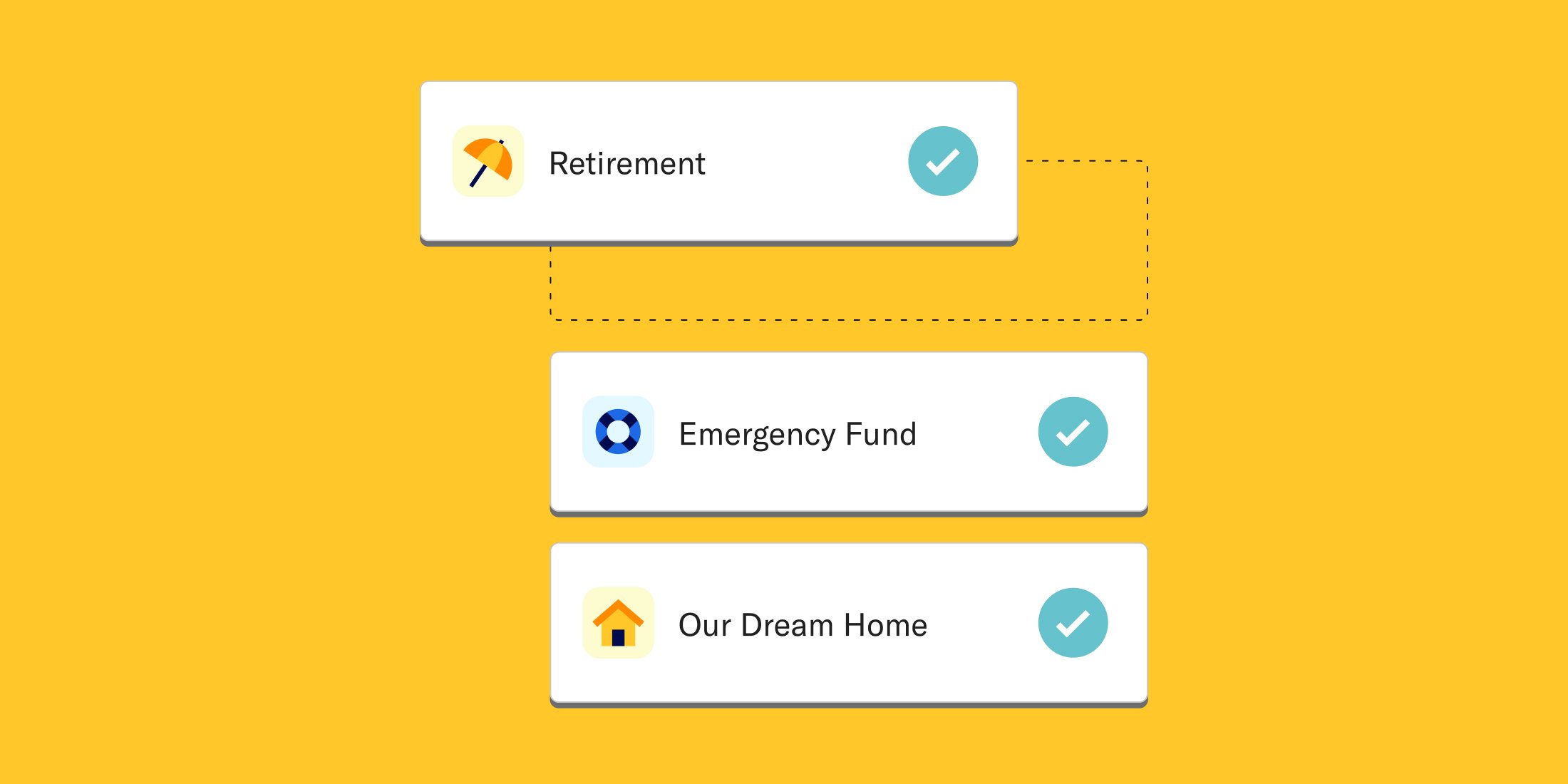Risk

Featured articles
-
![]()
How Betterment Manages Risks in Your Portfolio
Betterment’s tools can keep you on track with the best chance of reaching your goals.
How Betterment Manages Risks in Your Portfolio Betterment’s tools can keep you on track with the best chance of reaching your goals. Investing always involves some level of risk. But you should always have control over how much risk you take on. When your goals are decades away, it's easier to invest in riskier assets. The closer you get to reaching your goals, the more you may want to play it safe. Betterment’s tools can help manage risk and keep you on track toward your goals. In this guide, we’ll: Explain how Betterment provides allocation advice Talk about determining your personal risk level Walk through some of Betterment’s automated tools that help you manage risk Take a look at low-risk portfolios The key to managing your risk: asset allocation Risk is inherent to investing, and to some degree risk is good. High risk, high reward, right? What’s important is how you manage your risk. You want your investments to grow as the market fluctuates. One major way investors manage risk is through diversification. You’ve likely heard the old cliche, “Don’t put all your eggs in one basket.” This is the same reasoning investors use. We diversify our investments, putting our eggs in various baskets, so to speak. This way if one investment fails, we don’t lose everything. But how do you choose which baskets to put your eggs in? And how many eggs do you put in those baskets? Investors have a name for this process: asset allocation. Asset allocation involves splitting up your investment dollars across several types of financial assets (like stocks and bonds). Together these investments form your portfolio. A good portfolio will have your investment dollars in the right baskets: protecting you from extreme loss when the markets perform poorly, yet leaving you open to windfalls when the market does well. If that sounds complicated, there’s good news: Betterment will automatically recommend how to allocate your investments based on your individual goals. How Betterment provides allocation advice At Betterment, our recommendations start with your financial goals. Each of your financial goals—whether it’s a vacation or retirement—gets its own allocation of stocks and bonds. Next we look at your investment horizon, a fancy term for “when you need the money and how you’ll withdraw it.” It’s like a timeline. How long will you invest for? Will you take it out all at once, or a little bit at a time? For a down payment goal, you might withdraw the entire investment after 10 years once you’ve hit your savings mark. But when you retire, you’ll probably withdraw from your retirement account gradually over the course of years. What if you don’t have a defined goal? If you’re investing without a timeline or target amount, we’ll use your age to set your investment horizon with a default target date of your 65th birthday. We’ll assume you’ll withdraw from it like a retirement account, but maintain a slightly riskier portfolio even when you hit the target date, since you haven’t decided when you'll liquidate those investments. But you’re not a “default” person. So why would you want a default investment plan? That’s why you should have a goal. When we know your goal and time horizon, we can determine the best risk level by assessing possible outcomes across a range of bad to average markets. Our projection model includes many possible futures, weighted by how likely we believe each to be. By some standards, we err on the side of caution with a fairly conservative allocation model. Our mission is to help you get to your goal through steady saving and appropriate allocation, rather than taking on unnecessary risk. How much risk should you take on? Your investment horizon is one of the most important factors in determining your risk level. The more time you have to reach your investing goals, the more risk you can afford to safely take. So generally speaking, the closer you are to reaching your goal, the less risk your portfolio should be exposed to. This is why we use the Betterment auto-adjust—a glide path (aka formula) used for asset allocation that becomes more conservative as your target date approaches. We adjust the recommended allocation and portfolio weights of the glide path based on your specific goal and time horizon. Want to take a more aggressive approach? More conservative? That’s totally ok. You’re in control. You always have the final say on your allocation, and we can show you the likely outcomes. Our quantitative approach helps us establish a set of recommended risk ranges based on your goals. If you choose to deviate from our risk guidance, we’ll provide you with feedback on the potential implications. Take more risk than we recommend, and we’ll tell you we believe your approach is “too aggressive” given your goal and time horizon. Even if you care about the downsides less than the average outcome, we’ll still caution you against taking on more risk, because it can be very difficult to recover from losses in a portfolio flagged as “too aggressive.” On the other hand, if you choose a lower risk level than our “conservative” band, we'll label your choice “very conservative.” A downside to taking a lower risk level is you may need to save more. You should choose a level of risk that’s aligned with your ability to stay the course. An allocation is only optimal if you’re able to commit to it in both good markets and bad ones. To ensure you’re comfortable with the short-term risk in your portfolio, we present both extremely good and extremely poor return scenarios for your selection over a one-year period. How Betterment automatically optimizes your risk An advantage of investing with Betterment is that our technology works behind the scenes to automatically manage your risk in a variety of ways, including auto-adjusted allocation and rebalancing. Auto-adjusted allocation For most goals, the ideal allocation will change as you near your goal. Our automated tools aim to make those adjustments as efficient and tax-friendly as possible. Deposits, withdrawals, and dividends can help us guide your portfolio toward the target allocation, without having to sell any assets. If we do need to sell any of your investments, our tax-smart technology is designed to minimize the potential tax impact. First we look for shares that have losses. These can offset other taxes. Then we sell shares with the smallest embedded gains (and smallest potential taxes). Rebalancing Over time, individual assets in a diversified portfolio move up and down in value, drifting away from the target weights that help achieve proper diversification. The difference between your target allocation and the actual weights in your current ETF portfolio is called portfolio drift. We define portfolio drift as the total absolute deviation of each super asset class from its target, divided by two. These super asset classes are US Bonds, International Bonds, Emerging Markets Bonds, US Stocks, International Stocks, and Emerging Markets Stocks. A high drift may expose you to more (or less) risk than you intended when you set the target allocation. Betterment automatically monitors your account for rebalancing opportunities to reduce drift. There are several different methods depending on the circumstances: First, in response to cash flows such as deposits, withdrawals, and dividend reinvestments, Betterment buys underweight holdings and sells overweight holdings. This reactive rebalancing generally occurs when cash flows going into or out of the portfolio are already happening. We use inflows (like deposits and dividend reinvestments) to buy asset classes that are under-weight. This reduces the need to sell, which in turn reduces potential capital gains taxes. And we use outflows (like withdrawals) by seeking to first sell asset classes that are overweight. Second, if cash flows are not sufficient to keep a client’s portfolio drift within its applicable drift tolerance (such parameters as disclosed in Betterment’s Form ADV), automated rebalancing sells overweight holdings in order to buy underweight ones, aligning the portfolio more closely with its target allocation. This proactive rebalancing reshuffles assets that are already in the portfolio, and requires a minimum portfolio balance (clients can review the estimated balance at www.betterment.com/legal/portfolio-minimum). The rebalancing algorithm is also calibrated to avoid frequent small rebalance transactions and to seek tax efficient outcomes, such as helping to reduce wash sales and minimizing short-term capital gains. Allocation change rebalancing occurs when you change your target allocation. This sells securities and could possibly realize capital gains, but we still utilize our tax minimization algorithm to help reduce the tax impact. We’ll let you know the potential tax impact before you confirm your allocation change. Once you confirm it, we’ll rebalance to your new target with minimized drift. If you are an Advised client, rebalancing in your account may function differently depending on the customizations your Advisor has selected for your portfolio. We recommend reaching out to your Advisor for further details. For more information, please review our rebalancing disclosures. How Betterment reduces risk in portfolios Investments like short-term US treasuries can help reduce risk in portfolios. At a certain point, however, including assets such as these in a portfolio no longer improves returns for the amount of risk taken. For Betterment, this point is our 60% stock portfolio. Portfolios with a stock allocation of 60% or more don’t incorporate these exposures. We include our U.S. Ultra-Short Income ETF and our U.S. Short-Term Treasury Bond ETF in the portfolio at stock allocations below 60% for both the IRA and taxable versions of the Betterment Core portfolio strategy. If your portfolio includes no stocks (meaning you allocated 100% bonds), we can take the hint. You likely don’t want to worry about market volatility. So in that case, we recommend that you invest everything in these ETFs. At 100% bonds and 0% stocks, a Betterment Core portfolio consists of 60% U.S. short-term treasury bonds, 20% U.S. short-term high quality bonds, and 20% inflation protected bonds. Increase the stock allocation in your portfolio, and we’ll decrease the allocation to these exposures. Reach the 60% stock allocation threshold, and we’ll remove these funds from the recommended portfolio. At that allocation, they decrease expected returns given the desired risk of the overall portfolio. Short-term U.S. treasuries generally have lower volatility (any price swings are quite mild) and smaller drawdowns (shorter, less significant periods of loss). The same can be said for short-term high quality bonds, but they are slightly more volatile. It’s also worth noting that these asset classes don’t always go down at exactly the same time. By combining these asset classes, we’re able to produce a portfolio with a higher potential yield while maintaining relatively lower volatility. As with other assets, the returns for assets such as high quality bonds include both the possibility of price returns and income yield. Generally, price returns are expected to be minimal, with the primary form of returns coming from the income yield. The yields you receive from the ETFs in Betterment’s 100% bond portfolio are the actual yields of the underlying assets after fees. Since we’re investing directly in funds that are paying prevailing market rates, you can feel confident that the yield you receive is fair and in line with prevailing rates. -
![]()
How to course correct when you simply can't stay the course
De-risking during market volatility can be costly. Here’s how to do it without breaking the ...
How to course correct when you simply can't stay the course De-risking during market volatility can be costly. Here’s how to do it without breaking the bank. The best course of action during market volatility is often inaction. That’s because selling riskier assets at a loss locks in those losses. It foregoes their potential for future growth, and it might also trigger capital gains taxes in the process. But if taking some sort of action feels necessary, then modestly reducing your overall risk exposure can be a reasonable alternative. Consider dialing down your existing stock allocation by a few percentage points, or lower the costs of recalibrating by using your future deposits instead. Either way, the solution may be the same: sprinkling in more bonds. Consider bonds to calm your investing nerves When people talk about diversification, equities like international stocks get most of the attention. But no less important in the role of managing risk are bonds. These are the loans given to governments and companies by investors, and while they're not completely risk-free (no asset is), the relatively-modest interest they tend to pay out can feel like a windfall when stock values are plunging. They won’t negate all of the volatility of stocks, but they can help smooth things out and preserve capital. This is why all of our recommended allocations include holding at least some bonds. One way to de-risk some of your future investing is with one of our portfolios made up of both stocks and bonds (Core, Value Tilt, etc.). We’ll recommend a risk level based on your goal, but we make it easy to dial up the bond allocation to your preference. Over time, you can slowly finetune things until your collective risk feels right. Or you can let us automatically adjust it based on your target date. We also offer two portfolios comprised entirely of bonds, each one designed for a different use: The BlackRock Target Income portfolio, designed to help you limit market volatility, preserve wealth, and generate income. The Goldman Sachs Tax-Smart Bonds portfolio, designed for high-income individuals seeking a higher after-tax yield compared to a cash account. Don’t forget about the role of cash One of the best ways to mitigate your overall financial risk is by shoring up your emergency fund, which may include a high-yield cash account like our Cash Reserve. Imagine losing your income stream, and how much time you'd want to get back on your feet. A good place to start is 3-6 months' worth of your essential expenses, but your right amount is whatever helps you sleep more soundly at night. Cash Reserve offered by Betterment LLC and requires a Betterment Securities brokerage account. Betterment is not a bank. FDIC insurance provided by Program Banks, subject to certain conditions. Learn more. Steadying the ship during unsteady times As we mentioned up front, right-sizing your risk during downturns isn’t always cheap. But there are ways to minimize the costs. Lowering your risk profile incrementally is one of them, and stretching out your safety net is another. Either way, it’s okay to recalibrate your risk tolerance from time-to-time, and you can do it wisely with Betterment. -
![]()
Betterment's asset allocation methodology
Betterment helps you meet your goals by providing allocation advice. Our allocation ...
Betterment's asset allocation methodology Betterment helps you meet your goals by providing allocation advice. Our allocation methodology and the assumptions behind it are worth exploring. When you sign up with Betterment, you can set up investment goals you wish to save towards. You can set up countless investment goals. While creating a new investment goal, we will ask you for the anticipated time horizon of that goal, and to select one of the following goal types. Major Purchase Education Retirement Retirement Income General Investing Emergency Fund Betterment also allows users to create cash goals through the Cash Reserve offering, and crypto goals through the Crypto ETF portfolio. These goal types are outside the scope of this allocation advice methodology. Cash Reserve offered by Betterment LLC and requires a Betterment Securities brokerage account. Betterment is not a bank. FDIC insurance provided by Program Banks, subject to certain conditions. Learn more. For all investing goals (except for Emergency Funds) the anticipated time horizon and the goal type you select inform Betterment when you plan to use the money, and how you plan to withdraw the funds (i.e. full immediate liquidation for a major purchase, or partial periodic liquidations for retirement). Emergency Funds, by definition, do not have an anticipated time horizon (when you set up your goal, Betterment will assume a time horizon for Emergency Funds to help inform saving and deposit advice, but you can edit this, and it does not impact our recommended investment allocation). This is because we cannot predict when an unexpected emergency expense will arise, or how much it will cost. For all goals (except for Emergency Funds) Betterment will recommend an investment allocation based on the time horizon and goal type you select. Betterment develops the recommended investment allocation by projecting a range of market outcomes and averaging the best-performing risk level across the 5th-50th percentiles. For Emergency Funds, Betterment’s recommended investment allocation is formed by determining the safest allocation that seeks to match or just beat inflation. Below are the ranges of recommended investment allocations for each goal type. Goal Type Most Aggressive Recommended Allocation Most Conservative Recommended Allocation Major Purchase 90% stocks (33+ years) 0% stocks (time horizon reached) Education 90% stocks (33+ years) 0% stocks (time horizon reached) Retirement 90% stocks (20+ years until retirement age) 56% stocks (retirement age reached) Retirement Income 56% stocks (24+ years remaining life expectancy) 30% stocks (9 years or less remaining life expectancy) General Investing 90% stocks (20+ years) 56% stocks (time horizon reached) Emergency Fund Safest allocation that seeks to match or just beat inflation Safest allocation that seeks to match or just beat inflation As you can see from the table above, in general, the longer a goal’s time horizon, the more aggressive Betterment’s recommended allocation. And the shorter a goal’s time horizon, the more conservative Betterment’s recommended allocation. This results in what we call a “glidepath” which is how our recommended allocation for a given goal type adjusts over time. Below are the full glidepaths when applicable to the goal types Betterment offers. Major Purchase/Education Goals Retirement/Retirement Income Goals Figure above shows a hypothetical example of a client who lives until they’re 90 years old. It does not represent actual client performance and is not indicative of future results. Actual results may vary based on a variety of factors, including but not limited to client changes inside the account and market fluctuation. General Investing Goals Betterment offers an “auto-adjust” feature that will automatically adjust your goal’s allocation to control risk for applicable goal types, becoming more conservative as you near the end of your goals’ investing timeline. We make incremental changes to your risk level, creating a smooth glidepath. Since Betterment adjusts the recommended allocation and portfolio weights of the glidepath based on your specific goals and time horizons, you’ll notice that “Major Purchase” goals take a more conservative path compared to a Retirement or General Investing glidepath. It takes a near zero risk for very short time horizons because we expect you to fully liquidate your investment at the intended date. With Retirement goals, we expect you to take distributions over time so we will recommend remaining at a higher risk allocation even as you reach the target date. Auto-adjust is available in investing goals with an associated time horizon (excluding Emergency Fund goals, the BlackRock Target Income portfolio, and the Goldman Sachs Tax-Smart Bonds portfolio) for the Betterment Core portfolio, SRI portfolios, Innovation Technology portfolio, Value Tilt portfolio, and Goldman Sachs Smart Beta portfolio. If you would like Betterment to automatically adjust your investments according to these glidepaths, you have the option to enable Betterment’s auto-adjust feature when you accept Betterment’s recommended allocation. This feature uses reactive rebalancing and proactive rebalancing to help keep your goal’s allocation inline with our recommended allocation. Adjusting for Risk Tolerance The above investment allocation recommendations and glidepaths are based on what we call “risk capacity” or the extent to which a client’s goal can sustain a financial setback based on its anticipated time horizon and liquidation strategy. Clients have the option to agree with this recommendation or to deviate from it. Betterment uses an interactive slider that allows clients to toggle between different investment allocations (how much is allocated to stocks versus bonds) until they find the allocation that has the expected range of growth outcomes they are willing to experience for that goal given their tolerance for risk. Betterment’s slider contains 5 categories of risk tolerance: Very Conservative: This risk setting is associated with an allocation that is more than 7 percentage points below our recommended allocation to stocks. That’s ok, as long as you’re aware that you may sacrifice potential returns in order to limit your possibility of experiencing losses. You may need to save more in order to reach your goals. This setting is appropriate for those who have a lower tolerance for risk. Conservative: This risk setting is associated with an allocation that is between 4-7 percentage points below our recommended allocation to stocks. That’s ok, as long as you’re aware that you may sacrifice potential returns in order to limit your possibility of experiencing losses. You may need to save more in order to reach your goals. This setting is appropriate for those who have a lower tolerance for risk. Moderate: This risk setting is associated with an allocation that is within 3 percentage points of our recommended allocation to stocks. Aggressive: This risk setting is associated with an allocation that is between 4-7 percentage points above our recommended allocation to stocks. This gives the benefit of potentially higher returns in the long-term but exposes you to higher potential losses in the short-term. This setting is appropriate for those who have a higher tolerance for risk. Very Aggressive: This risk setting is associated with an allocation that is more than 7 percentage points above our recommended allocation to stocks. This gives the benefit of potentially higher returns in the long-term but exposes you to higher potential losses in the short-term. This setting is appropriate for those who have a higher tolerance for risk.
Considering a major transfer? Get one-on-one help with one of our experts. Explore our licensed concierge
All Risk articles
-
![]()
The pitfalls of comparing portfolio returns
The pitfalls of comparing portfolio returns Sep 2, 2025 1:30:06 PM How to take stock of your stocks (and bonds)—here, there, everywhere. Investing can feel like a leap of faith. You pick a portfolio. You deposit money. Then, you wait. Trouble is, it takes a while for compound growth to do its thing. Using the Rule of 72 and historical stock returns, it takes roughly a decade for every dollar invested to double. That’s a lot of time for second-guessing. You may peek at your portfolio returns and wonder, “Could I be doing better?” Don’t worry; it’s normal to question whether we’re making the right choices with our money. But comparing different portfolios can be tricky. Variables abound. There’s the composition of the portfolios themselves, but also their fees and tax treatments. So whether you’re sizing us up with rival money managers, or with the stock indexes you see most often in the news, we’re here to help you level set. The ABCs of apples-to-apples comparisons Let’s start with a statistic we’re quite proud of: Since launching in 2011, our 90% stock Core Portfolio has delivered over 9.0% returns*. Those are the returns of real Betterment customers, minus fees, and taking the timing of deposits and withdrawals out of the equation. This helps focus more on the performance of the portfolio itself. *As of 12/31/2024, and inception date 9/7/2011. Composite annual time-weighted returns: 12.7% over 1 year, 7.9% over 5 years, and 7.8% over 10 years. Composite performance calculated based on the dollar-weighted average of actual client time-weighted returns for the Core portfolio at 90/10 allocation, net of fees, includes dividend reinvestment, and excludes the impact of cash flows. Past performance not guaranteed, investing involves risk. So, is 9.0% good? Well, it depends on the comparison. Stock indexes like the S&P 500 and Dow Jones dominate the news, but they’re hardly comprehensive. For one, they exclude bonds, a lower-yield staple of many portfolios. There’s a reason why regardless of the portfolio, we recommend holding at least some bonds. They help temper market volatility and preserve precious capital. Secondly, popular indexes also largely ignore international markets. The S&P, for example, typically represents less than half the value of all investable stocks in the world. Our globally-diversified portfolios, meanwhile, spread things out in service of a smoother investing journey. We're built for the long run, and history has shown that American and International assets take turns outperforming each other every 10-15 years. So the modest amount of international exposure in many of our portfolios means this: you're in a better position to profit when the pendulum swings the other way. Now, taking all of this to heart isn't easy. Not when the S&P returns 20% in a given year. At moments like these, it’s perfectly normal to feel FOMO when looking at the returns of your globally-hedged investing. To keep the faith, it helps to keep the right benchmark(s) in mind. Not all diversification is created equal We’re not alone in offering globally-diversified portfolios. But two portfolios, even with similar stock-to-bond ratios, can take very different paths to the same end goal. Tax optimization, market timing, and fund fees can all impact your investing’s bottom line as well. Some investors compare providers by investing a little with each, waiting a few months, then comparing the balances. This sort of trialing, however, may not tell you much. When it comes to our portfolios, you can find better comparisons in two particular ETFs that seek to track a wide swath of the market: ACWI for stocks and AGG for bonds. See how your Betterment portfolio stacks up against them in the Performance section for any goal or account. Simply scroll down to “Portfolio returns,” click “Add comparison,” and pick from the available allocations of stocks and bonds. We show your “Total return” by default at Betterment, otherwise known as the portfolio’s total growth for a given time period. You can also see this expressed as an “Annualized” return, or the yearly growth rate you often see advertised with other investments. Putting your performance in perspective Comparison may be the thief of joy, but it’s okay, prudent even, to evaluate your investing returns on occasion. Once or twice a year is plenty. The key is to steer clear of common pitfalls along the way. Like comparing your globally-diversified apple to someone else’s all-U.S. orange. Or cherry-picking a small sample size instead of a longer, more-reliable track record. It’s easier said than done. That’s why we bake more relevant comparisons right into the Betterment app. It’s also why we produce content like this. Because if there’s a silver lining to the slow snowballing of compound growth, it’s that you have plenty of time to brush up on the basics. -
![]()
With U.S. markets struggling, is now the time to go global?
With U.S. markets struggling, is now the time to go global? May 7, 2025 6:00:00 AM Here’s the case for keeping a little international exposure in your investing. U.S. stocks have been the envy of the world since 2010, generating nearly 4 times the returns of their international counterparts. But since April 2, President Trump’s tariff policies have dragged down U.S. stocks and left investors unnerved. Does this mean the U.S. market is toast? Certainly not, but it does signal a potential shift in foreign investment, which means that if you haven’t already, now may be the time to consider diversifying globally. And we can help on that front. Hello, world. We're here to invest. The U.S. market is big, but it’s not the only game in town. Hundreds of billions of dollars in assets trade hands in international markets each day. It's why the Betterment Core portfolio, built on the idea that more diversification equals less risk, roughly mirrors the relative weights of global markets. Like we mentioned above, the U.S. market has been on an absolute tear the past 15 years, and even more so since 2020. This record winning streak has fueled our home bias, or the tendency for American investors to favor American markets. But history shows a pendulum that typically swings back and forth every 5 to 10 years. International markets outperformed in the 2000s, for example, and they saw a huge spike in the late 80s. So what’s an investor to do? If you're investing for the long term, the odds are good the U.S. market will hit at least one extended rough patch in that time. And in that scenario, a globally-hedged portfolio will very likely smooth out your returns from year to year. We’re seeing this start to play out in 2025, with the Betterment Core portfolio and its global diversification outperforming many common U.S.-only funds. As of 5/2/2025. Betterment Core composite actual time-weighted returns: 10.52% over 1 year, 12.35% over 5 years, and 7.30% over 10 years as of 5/2/2025. Composite performance calculated based on the dollar weighted average of actual client time-weighted returns for the Core portfolio at 90/10 allocation, net fees. Performance not guaranteed, investing involves risk. That being said, diversification is a sliding scale. There is no pass/fail, no good or bad. If you’re looking for a little more international exposure, but not to the extent of one of our pre-built portfolios, you can invest in our Flexible portfolio and tailor your allocation as you see fit. But if you’re less experienced in investing, and simply want an option that requires less work, then let us do the recalibrating for you. We update our pre-built portfolios annually, finetuning our U.S. and international exposures based on the latest long-term projections. We can’t predict when the global tides will turn, but we can make sure you don’t miss out when they do. -
![]()
How we make market downturns less scary
How we make market downturns less scary Apr 7, 2025 12:12:58 PM And how it can benefit your investing’s bottom line. The recent round of tariffs and trade wars have roiled markets, offering the latest example of investing’s inherent volatility. The fact that market drops do happen, and happen with some regularity, means that managing them is not only possible but paramount. "It's not about whether you're right or wrong," the investor George Soros once quipped. "But how much money you make when you're right, and how much you lose when you're wrong." Mitigating losses, in other words, matters just as much as maximizing gains. And this is true for two important reasons: The bigger the loss, the more tempted you may be to sell assets and lock in those losses. The bigger the loss, the less fuel for growth you have when the market does rebound. Point A is psychological, while Point B is mathematical, so let’s take each one separately. In the process, we’ll explain how we build our portfolios to not only weather the storm, but soak up as many rays as possible when the sun shines again. Smoothing out your investing journey Imagine you’re given a choice of rides: one’s a hair-raising roller coaster, the other a bike ride through a series of rolling hills. Sure, thrill seekers may choose the first option, but we think most investors would prefer the latter, especially if the ride in question lasts for decades. So to smooth things out, we diversify. Owning a mix of asset types can help soften the blow on your portfolio when any one particular type underperforms. Our Core portfolio, for example, features a blend of asset types like U.S. stocks and global bonds. The chart below shows how those asset types have performed individually since 2018, compared with the blended approach of a 90% stocks, 10% bonds allocation of Core. As you can see, Core avoids the big losses that individual asset classes experience on the regular. That’s one reason why through all the ups and downs of the past 15 years, it’s delivered 9% composite annual time-weighted returns1, and that’s after fees are accounted for. 1As of 12/31/2024, and inception date 9/7/2011. Composite annual time-weighted returns: 12.7% over 1 year, 7.9% over 5 years, and 7.8% over 10 years. Composite performance calculated based on the dollar-weighted average of actual client time-weighted returns for the Core portfolio at 90/10 allocation, net of fees, includes dividend reinvestment, and excludes the impact of cash flows. Past performance not guaranteed, investing involves risk. Core’s exposure to global bonds and international stocks has also helped its cause, given their outperformance relative to U.S. stocks year-to-date amidst the current market volatility of 2025. A smoother ride can take your money farther Downside protection is all the more important when considering the “math of losses.” We’ll be the first to admit it’s hard math to follow, but it boils down to this: as a portfolio’s losses rack up, the gains required to break even grow exponentially. The chart below illustrates this with losses in blue, and the gains required to be made whole in orange. Notice how their relationship is anything but 1-to-1. This speaks to the previously-mentioned Point B: The bigger your losses, the less fuel for growth you have in the future. Investors call this “volatility drag,” and it’s why we carefully weigh the risk of an investment against its expected returns. By sizing them up together, expressed as the Sharpe ratio, we can help assess whether the reward of any particular asset justifies its risk. This matters because building long-term wealth is a marathon, not a race. It pays to pace yourself. And yet, there will still be bumps in the road Because no amount of downside protection will get rid of market volatility altogether. It’s okay to feel worried during drops. But hopefully, with more information on our portfolio construction and automated tools like tax loss harvesting, you can ride out the storm with a little more peace-of-mind. And if you’re looking for even more reassurance, consider upgrading to Betterment Premium and talking with our team of advisors. -
![]()
Four keys to riding the market's ups and downs
Four keys to riding the market's ups and downs Nov 8, 2024 6:00:00 AM Let time work in your favor. Let the market worry about itself. Financial markets are unpredictable. No matter how much research you do and how closely you follow the news, trying to “time the market” usually means withdrawing too early and investing too late. In this guide, we’ll explain: Why a long-term strategy is often the best approach The problems with trying to time the market How to accurately evaluate portfolio performance How to make adjustments when you need to Why a long-term strategy is often the best approach Watch the market closely, and you’ll see it constantly fluctuate. The markets can be sky high one day, then come crashing down the next. Zoom in close enough on any ten-year period, and you’ll see countless short-term gains and losses that can be large in magnitude. Zoom out far enough, and you’ll see a gradual upward trend. It’s easy to get sucked into market speculation. Those short-term wins feel good, and look highly appealing. But you’re not trying to win the lottery here—you’re investing. You’re trying to reach financial goals. At Betterment, we believe the smartest way to do that is by diversifying your portfolio, making regular deposits, and holding your assets for longer. Accurately predicting where the market is going in the short-term is extremely difficult, but investing regularly over the long-term is an activity you can control that can lead to far more reliable performance over time. The power of compounding is real. By regularly investing in a well-diversified portfolio, you’re probably not going to suddenly win big. But you’re unlikely to lose it all, either. And by the time you’re ready to start withdrawing funds, you’ll have a lot more to work with. The basics of diversification Diversification is all about reducing risk. Every financial asset, industry, and market is influenced by different factors that change its performance. Invest too heavily in one area, and your portfolio becomes more vulnerable to its specific risks. Put all your money in an oil company, and a single oil spill, regulation, lawsuit, or change in demand could devastate your portfolio. There’s no failsafe. The less you lean on any one asset, economic sector, or geographical region, the more stable your portfolio will likely be. Diversification sets your portfolio up for long-term success with steadier, more stable performance. The problems with trying to time the market There are two big reasons not to try and time the market: It’s difficult to consistently beat a well-diversified portfolio Taxes Many investors miss more in gains than they avoid in losses by trying to time a dip. Even the best active investors frequently make “the wrong call.” They withdraw too early or go all-in too late. There are too many factors outside of your control. Too much information you don’t have. To beat a well-diversified portfolio, you have to buy and sell at the perfect time. Again. And again. And again. No matter how much market research you do, you’re simply unlikely to win that battle in the long run. Especially when you consider short-term capital gains taxes. Any time you sell an asset you’ve held for less than a year and make a profit, you have to pay short-term capital gains taxes. Just like that, you might have to shave up to 37% off of your profits. With a passive approach that focuses on the long game, you hold onto assets for much longer, so you’re far less likely to have short-term capital gains (and the taxes that come with them). Considering the short-term tax implications, you don’t just have to consistently beat a well-diversified, buy-and-hold portfolio. In order to outperform it by timing the market, you have to blow it out of the water. And that’s why you may want to rethink the way you evaluate portfolio performance. How to evaluate portfolio performance Want to know how well your portfolio is doing? You need to use the right benchmarks and consider after-tax adjustments. US investors often compare their portfolio performance to the S&P 500 or the Dow Jones Industrial Average. But that’s helpful if you’re only invested in the US stock market. If you’re holding a well-diversified portfolio holding stocks and bonds across geographical regions, a blended benchmark that consists of global stocks such as MSCI ACWI Index and global bonds using Bloomberg Barclays Global Aggregate Bond Index may be a better comparison. Just make sure you compare apples to apples. If you have a portfolio that’s 80% stocks, don’t compare it to a portfolio with 100% stocks. The other key to evaluating your performance is tax adjustments. How much actually goes in your pocket? If you’re going to lose 30% or more of your profits to short-term capital gains taxes, that’s a large drain on your overall return that may impact how soon you can achieve your financial goals. How to adjust your investments during highs and lows At Betterment, we believe investors get better results when they don’t react to market changes. On a long enough timeline, market highs and lows won’t matter as much. But sometimes, you really do need to make adjustments. The best way to change your portfolio? Start small. Huge, sweeping changes are much more likely to hurt your performance. If stock investments feel too risky, you can even start putting your deposits into US Short-Term Treasuries instead, which are extremely low risk, highly liquid, and mature in about six months. This is called a “dry powder” fund. Make sure your adjustments fit your goal. If your goal is still years or decades away, your investments should probably be weighted more heavily toward diversified stocks. As you get closer to the end date, you can shift to bonds and other low-risk assets. Since it’s extremely hard to time the market, we believe it’s best to ride out the market highs and lows. We also make it easy to adjust your portfolio to fit your level of risk tolerance. It’s like turning a dial up or down, shifting your investments more toward stocks or bonds. You’re in control. And if “don’t worry” doesn’t put you at ease, you can make sure your risk reflects your comfort level. -
![]()
An investor’s guide to diversification
An investor’s guide to diversification Nov 1, 2024 8:00:00 AM Diversification is an investing strategy that helps reduce risk by allocating investments across various financial assets. Here’s everything you need to know. In 1 minute When you invest too heavily in a single asset, type of asset, or market, your portfolio is more exposed to the risks that come with it. That’s why investors diversify. Diversification means spreading your investments across multiple assets, asset classes, or markets. This aims to do two things: Limit your exposure to specific risks Make your performance more consistent As the market fluctuates, a diverse portfolio generally remains stable. Extreme losses from one asset have less impact—because that asset doesn’t represent your entire portfolio. Maintaining a diversified portfolio forces you to see each asset in relation to the others. Is this asset increasing your exposure to a particular risk? Are you leaning too heavily on one company, industry, asset class, or market? In 5 minutes In this guide, we’ll: Define diversification Explain the benefits of diversification Discuss the potential disadvantages of diversification What is diversification? Financial assets gain or lose value based on different factors. Stocks depend on companies’ performance. Bonds depend on the borrower’s (companies, governments, etc.) ability to pay back loans. Commodities depend on public goods. Real estate depends on property. Entire industries can rise or fall based on government activity. What’s good or bad for one asset may have no effect on another. If you only invest in stocks, your portfolio’s value completely depends on the performance of the companies you invest in. With bonds, changing interest rates or loan defaults could hurt you. And commodities are directly tied to supply and demand. Diversification works to spread your investments across a variety of assets and asset classes, so no single weakness becomes your fatal flaw. The more unrelated your assets, the more diverse your portfolio. So you might invest in some stocks. Some bonds. Some fund commodities. And then if one company has a bad quarterly report, gets negative press, or even goes bankrupt, it won’t tank your entire portfolio. You can make your portfolio more diverse by investing in different assets of the same type—like buying stocks from separate companies. Better yet: companies in separate industries. You can even invest internationally, since foreign markets can potentially be less affected by local downturns. What are the benefits of diversification? There are two main reasons to diversify your portfolio: It can help reduce risk It can provide more consistent performance Here’s how it works. Lower risk Each type of financial asset comes with its own risks. The more you invest in a particular asset, the more vulnerable you are to its risks. Put everything into bonds, for example? Better hope interest rates hold. Distributing your assets distributes your risk. With a diversified portfolio, there are more factors that can negatively affect your performance, but they affect a smaller percentage of your portfolio, so your overall risk is much lower. If 100% of your investments are in a single company and it goes under, your portfolio tanks. But if only 10% of your investments are in that company? The same problem just got a whole lot smaller. Consistent performance The more assets you invest in, the less impact each one has on your portfolio. If your assets are unrelated, their gains and losses depend on different factors, so their performance is unrelated, too. When one loses value, that loss is mitigated by the other assets. And since they’re unrelated, some of your other assets may even increase in value at the same time. Watch the value of a single stock or commodity over time, and you’ll see its value fluctuate significantly. But watch two unrelated stocks or commodities—or one of each—and their collective value fluctuates less. They can offset each other. Diversification can make your portfolio performance less volatile. The gains and losses are smaller, and more predictable. Potential disadvantages of diversification While the benefits are clear, diversification can have a couple drawbacks: It creates a ceiling on potential short-term gains Diverse portfolios may require more maintenance Limits short-term gains Diversification usually means saying goodbye to extremes. Reducing your risk also reduces your potential for extreme short-term gains. Investing heavily in a single asset can mean you’ll see bigger gains over a short period. For some, this is the thrill of investing. With the right research, the right stock, and the right timing, you can strike it rich. But that’s not how it usually goes. Diversification is about playing the long game. You’re trading the all-or-nothing outcomes you can get with a single asset for steady, moderate returns. May require more maintenance As you buy and sell financial assets, diversification requires you (or a broker) to consider how each change affects your portfolio’s diversity. If you sell all of one asset and re-invest in another you already have, you increase the overall risk of your portfolio. Maintaining a diversified portfolio adds another layer to the decision-making process. You have to think about each piece in relation to the whole. A robo advisor or broker can do this for you, but if you’re managing your own portfolio, diversification may take a little more work.
Looking for a specific topic?
- 401(k)s
- 529s
- Asset types
- Automation
- Benchmarks
- Bonds
- Budgeting
- Compound growth
- Costs
- Diversification
- Donating shares
- ETFs
- Education savings
- Emergency funds
- Financial advisors
- Financial goals
- Flexible portfolios
- Getting started investing
- Health Savings Accounts
- Home ownership
- IRAs
- Interest rates
- Investing accounts
- Market volatility
- Mutual funds
- Performance
- Portfolios
- Preparing to retire
- Retirement income
- Retirement planning
- Risk
- Rollovers and transfers
- Roth accounts
- Stocks
- Tax Coordination
- Tax loss harvesting
- Taxable accounts
- Taxes
No results found








